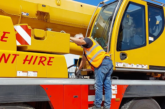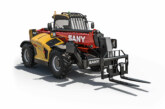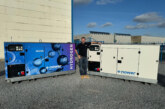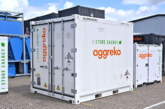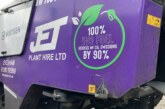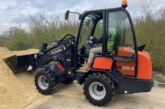
Mark Royse, Product Manager – Site Dumpers and Compaction Rollers at Terex Construction, explains how dovetailing timescales could support manufacturer R&D and, more importantly, lead to benefits for those buying or renting compact construction equipment.
With stringent international legislation dictating the emissions outputs of all off-highway equipment, it is now an essential part of product manufacturing R&D to take engine output into consideration – not just now, but for the future.
However, with multiple global standards for emissions regulation, the lack of alignment is creating unnecessary cost and complexity in the supply chain and potentially hindering innovation.
As a global manufacturer with more than 60 years’ experience in the site dumper market, we’ve seen our fair share of legislation and regulation changes.
Challenges have existed for many years in satisfying both regulated and unregulated markets with the expectations of achieving the highest possible ROI for our customers.
Over time, regulated and unregulated markets have become more divergent in their expectations and requirements, thereby increasing the challenge for equipment manufacturers.
However, for manufacturers like Terex which are looking to innovate as well as meet their compliance commitments,
the inconsistency of both the EU and EPA requirements can prove somewhat challenging.
The cost of engineering solutions with a high degree of technical differentiation for different markets can become cost prohibitive in the relatively low volume, low margin off-highway equipment sector.
In addition, end users in unregulated markets, understandably, don’t want to fund the development work for a product that has a technical specification beyond their needs.
 Regulated markets
Regulated markets
Taking a step back for a minute, the EPA Tier regulations govern diesel exhaust emissions for the US market, while Stage is relevant for the EU. Despite many similarities in these standards, there are some key differences in relation to power-banded emissions rating and the legislation roll-out calendar.
For power-banded emissions rating as an example, in the EU, engines below 37kW only have to meet Stage III standards. In contrast machines below 56kW in the US need to meet Tier 4 Final standards.
This creates a high level of technical difference in products between these two major markets. Coupled to this, unregulated markets cannot always be serviced by solutions designed for the EU or EPA markets.
The second difference provides an even bigger opportunity for discussion. While the Tier and Stage requirements are broadly the same, i.e. Tier 3 is mostly equivalent to Stage 3, there are differences to emissions ratings in the same power banding as highlighted above.
This difference becomes compounded when enforcement timescales are not aligned. While Europe is finalising standards that will enforce Stage V in 2019/20, including the introduction of a new limit for particulate number emissions, there is currently no corresponding plan for an equivalent Tier 5 roll-out in the US.
The smallest difference
Of course, for the end user, there is seemingly little need to be concerned. This is, rightly, seen as a challenge for manufacturers to overcome.
However, when companies, like Terex, want to innovate and develop the best products for market – all while remaining cost-effective and delivering value to the end user – this multiplicity of standards can lead to unnecessary expense in the supply chain and a lack of choice in the marketplace.
A good example of this is around some of the smaller dumper models, three tonnes and under. With 95 per cent of the site dumper market only requiring Stage III standards for these model sizes, the development cost to introduce engines to meet Tier 4 Final standards for the US marketplace is not necessarily in line with the potential sales volume.
Therefore, customers in the US may lose out in not having products made available if manufacturers cannot justify the costs of development. Conversely, if the manufacturer does look at development, then end users in Europe and the ROW could find themselves footing the R&D bill for the tougher US standards through increased overall unit prices.
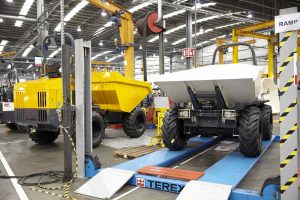 The solution?
The solution?
So, what’s the answer? End users clearly want the most efficient, cost-effective and emissions-compliant machinery.
Likewise, the wider global conversations around air quality and pollution-related deaths means that emissions will continue to feature heavily on the development agenda.
However, the development costs of moving to a variety of new standards every few years have to be covered somewhere. The likelihood is that the end user will have to bear at least some of the brunt.
Looking to the future, legislators have a clear opportunity to bring the main global standards in line. With one global legislation covering all marketplaces, or at least a commonality in terms of introduction dates and emissions rating for equivalent power bands, the focus can then shift even further onto innovation.
For example, let’s say both Stage 5 and Tier 5 for all engine sizes were to be introduced in 2020; this would enable manufacturers to effectively invest in developing engine technologies to maximise R&D expenditure.
Why does this matter?
While manufacturers would see a consistent development cycle worldwide, there are also key benefits for the end user.
With an even more efficient engine, which sees the development cost spread across all global markets and product ranges, the end user can get access to the most cost-effective product.
Likewise, when it comes to exporting and managing the residual markets, there is a much greater opportunity to source and sell product in the markets that offer the greatest potential return.


